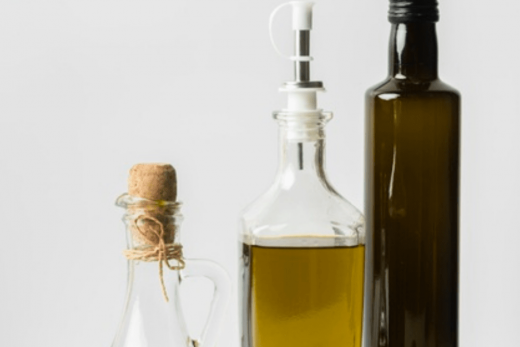Signs you’re over-exfoliating
Over-exfoliating is one of the biggest mistakes we see people making. Generally, skin should be exfoliated only one to two times per week to help expedite skin cell turnover without causing damage.
One to two times per week. If you’ve been slathering on the exfoliating acids daily, there’s a good chance your skin is begging for a break.
Luckily, it should be fairly easy to tell if you’re overdoing it on the exfoliators. Classic signs include:
irritation
redness
otherwise inflamed skin
Eventually, your complexion can become dry and flaky. You may even develop a rashlike texture, leading to uneven tone (like patchy, red blotches). Breakouts are another common reaction, especially small, rough, bumpy pimples.
Signs of over-exfoliation
irritation, burning, or peeling
redness and inflammation
breakouts, especially small pimples
increased sensitivity to other products in your routine
There is one symptom of overuse that’s harder to pinpoint: The skin may develop a tight, waxlike texture, which — get this — can be confused for a healthy glow. In reality, it’s anything but.
It can look waxy from wiping away skin cells and natural oils, allowing premature exposure of underlying skin. The skin appears as if it has a radiant shine. However, it is in fact very dry and exposed.
And overexposure can devolve into painful cracking and peeling. For reference, a healthy glow will always look plump and moisturized, not dry, thin, or waxy.
You may also see increased sensitivity to application of subsequent products in a regular daily regimen. In other words, the remainder of your skin care routine may suddenly cause redness, burning, or peeling.
But don’t blame it on your other products! It’s (probably) all the exfoliator’s fault.
Like we mentioned above, some of these symptoms have a tendency to make you feel like you need to exfoliate more, but resist. Here’s what you should do instead.
What to do if you’ve over-exfoliated
If you note any of the above reactions after exfoliating, whether from an overzealous face-scrubbing session or an application of acids, Geria advises the first thing to do is stop exfoliating until your skin has healed and is at its baseline texture.
“Baseline texture” will differ from person to person; in general, it just means the texture your skin had before overexposure. If you’ve always been acne prone, that will be your baseline texture. You’re really just waiting for the signs of over-exfoliation — redness, inflammation, peeling — to fade.
Over-exfoliation recovery 101
Stop all foaming cleansers, retinol products, and physical or chemical exfoliators.
Switch to a mild cleanser and a fragrance-free moisturizer.
Spot treat extremely red or raw areas with a rich emollient, like Aquaphor or Aqua Veil. You can also use a hydrocortisone cream or aloe gel.
There are ways to help calm irritation in the moment
“Immediately following an over-exfoliating episode, a cold compress can be applied to alleviate burning,” says Geria, adding that a hydrocortisone cream may also help with redness and inflammation.
“Aloe gel is known to have healing properties as well but can sometimes be irritating depending on how open and raw the areas are, in which case applying the actual aloe plant can help,” he adds.
You may need to readjust the rest of your skin care routine, too. Eliminate foaming cleansers (which can be drying and exacerbate existing issues), retinol products (which are too harsh for use on compromised skin), and, of course, any physical or chemical exfoliators. The goal is to keep it simple.
As for what to add to your regimen? A vitamin C serum, for starters. “Vitamin C can soothe and help to expedite the healing process,” Geria says.
REMIND YOURSELF TO BE PATIENT
Irritation occurs because you’ve removed more skin cells than your body is able to replenish. It’s kind of like the growing-out period after a bad haircut: annoying to deal with in real time but over before you know it.
When can you start exfoliating again?
Just because you’ve experienced some exfoliation irritation doesn’t mean you need to swear off the stuff forever. Once your skin has healed, dermatologists agree it’s possible to reintroduce your favorite grains or acids — albeit slowly and strategically.
When your skin has recovered, start by exfoliating once a week
And if you don’t experience any issues, work your way up from there. But stick to either a physical exfoliant or a chemical exfoliant. Mixing both on the same day can cause problems.





